For the 2025 school year, there are 2 public elementary schools serving 448 students in Sunray Collegiate Independent School District. This district's average elementary testing ranking is 6/10, which is in the top 50% of public elementary schools in Texas.
ÎÛÎÛÂþ» Elementary Schools in Sunray Collegiate Independent School District have an average math proficiency score of 40% (versus the Texas public elementary school average of 42%), and reading proficiency score of 54% (versus the 52% statewide average).
Minority enrollment is 63% of the student body (majority Hispanic), which is less than the Texas public elementary school average of 75% (majority Hispanic).
Overview
This School District
This State (TX)
# Schools
3 Schools
6,902 Schools
# Students
636 Students
3,737,053 Students
# Teachers
56 Teachers
255,471 Teachers
Student : Teacher Ratio
11:1
11:1
District Rank
Sunray Collegiate Independent School District, which is ranked #463 of all 1,196 school districts in Texas (based off of combined math and reading proficiency testing data) for the 2021-2022 school year.
The school district's graduation rate of 90% has stayed relatively flat over five school years.
Overall District Rank
#503 out of 1204 school districts
(Top 50%)
(Top 50%)
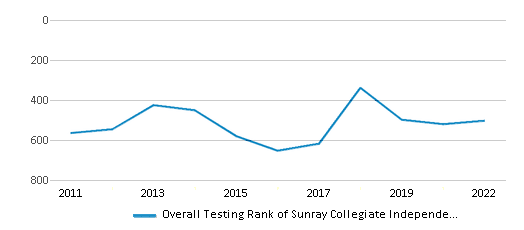
Math Test Scores (% Proficient)
41%
41%
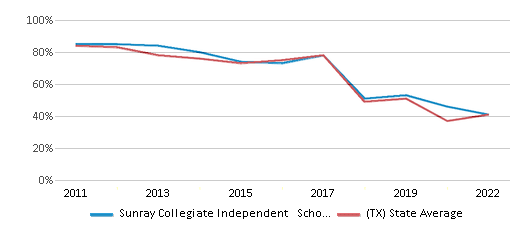
Reading/Language Arts Test Scores (% Proficient)
53%
51%
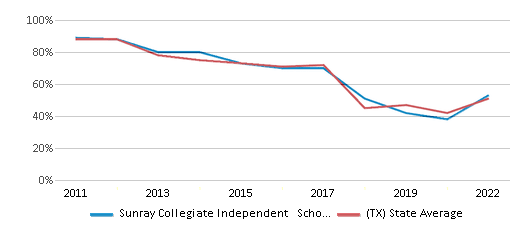
Science Test Scores (% Proficient)
35-39%
46%
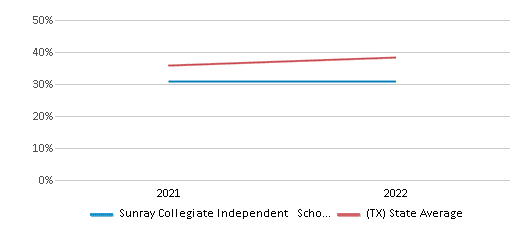
Graduation Rate
≥90%
90%
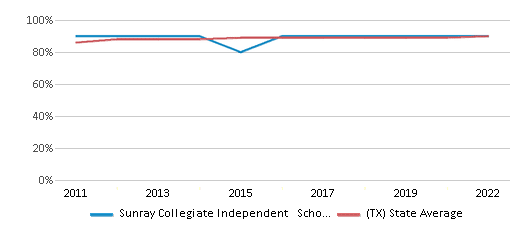
Students by Ethnicity:
Diversity Score
0.51
0.64
# American Indian Students
6 Students
11,705 Students
% American Indian Students
1%
n/a
# Asian Students
n/a
203,767 Students
% Asian Students
n/a
6%
# Hispanic Students
374 Students
1,997,454 Students
% Hispanic Students
59%
53%
# Black Students
1 Student
469,194 Students
% Black Students
n/a
13%
# White Students
246 Students
924,841 Students
% White Students
39%
25%
# Hawaiian Students
1 Student
5,879 Students
% Hawaiian Students
n/a
n/a
# Two or more races Students
8 Students
124,213 Students
% of Two or more races Students
1%
3%
Students by Grade:
# Students in PK Grade:
37
222,501
# Students in K Grade:
44
346,866
# Students in 1st Grade:
43
385,427
# Students in 2nd Grade:
44
402,148
# Students in 3rd Grade:
47
399,623
# Students in 4th Grade:
45
398,690
# Students in 5th Grade:
43
399,071
# Students in 6th Grade:
43
402,143
# Students in 7th Grade:
50
335,034
# Students in 8th Grade:
52
339,814
# Students in 9th Grade:
51
32,833
# Students in 10th Grade:
56
28,116
# Students in 11th Grade:
47
23,862
# Students in 12th Grade:
34
20,925
# Ungraded Students:
-
-
District Revenue and Spending
The revenue/student of $14,572 is higher than the state median of $13,387. The school district revenue/student has declined by 7% over four school years.
The school district's spending/student of $17,788 is higher than the state median of $14,116. The school district spending/student has declined by 7% over four school years.
Total Revenue
$9 MM
$74,029 MM
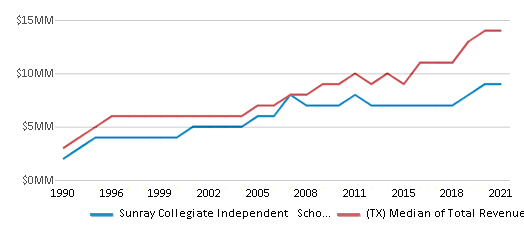
Spending
$11 MM
$78,063 MM
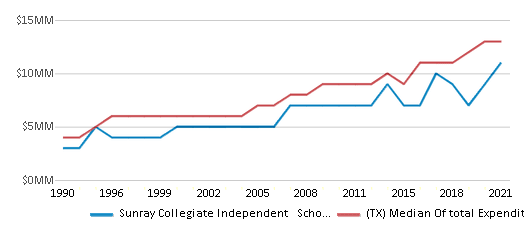
Revenue / Student
$14,572
$13,387
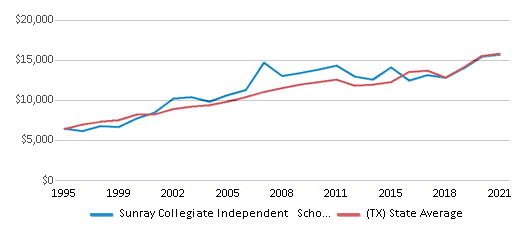
Spending / Student
$17,788
$14,116
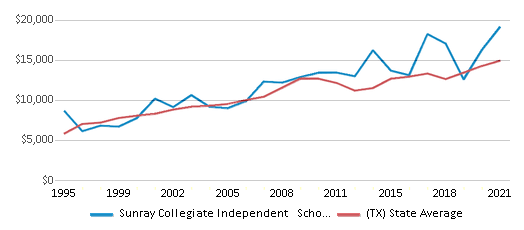
Best Sunray Collegiate Independent School District ÎÛÎÛÂþ» Elementary Schools (2025)
School
(Math and Reading Proficiency)
(Math and Reading Proficiency)
Location
Grades
Students
Rank: #11.
Sunray Elementary School
(Math: 55-59% | Reading: 55-59%)
Rank:
Rank:
8/
Top 30%10
509 Ave Q
Sunray, TX 79086
(806) 948-4222
Sunray, TX 79086
(806) 948-4222
Grades: PK-5
| 303 students
Rank: #22.
Sunray Middle School
(Math: 25-29% | Reading: 50-54%)
Rank:
Rank:
5/
Bottom 50%10
504 E 7th St
Sunray, TX 79086
(806) 948-4444
Sunray, TX 79086
(806) 948-4444
Grades: 6-8
| 145 students
Recent Articles

Year-Round Or Traditional Schedule?
Which is more appropriate for your child? A year-round attendance schedule or traditional schedule? We look at the pros and cons.

Why You Should Encourage Your Child to Join a Sports Team
Participating in team sports has a great many benefits for children, there is no doubt. In this article you will learn what those benefits are.

White Students are Now the Minority in U.S. ÎÛÎÛÂþ» Schools
Increasing birth rates among immigrant families from Asia and Central and South America, combined with lower birth rates among white families, means that for the first time in history, public school students in the United States are majority-minority. This shift in demographics poses difficulties for schools as they work to accommodate children of varying language abilities and socio-economic backgrounds.





